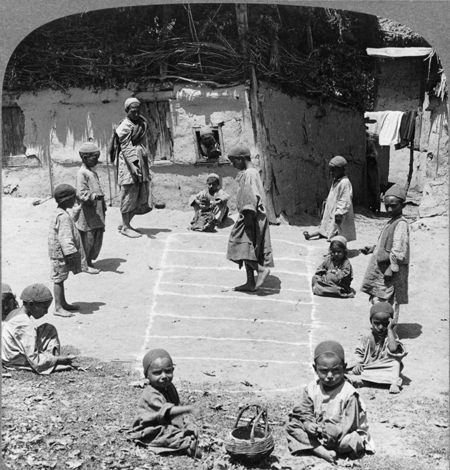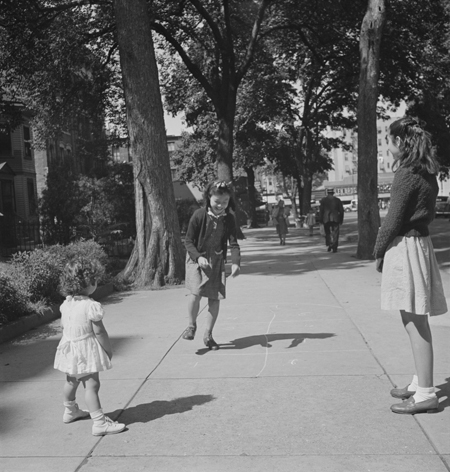Analyzing Primary Sources: Grade 4 Writing Prompts & Activities

Primary source images are great resources for integrating language arts with social studies. The activities below were designed around the grade 4 Common Core State Standards for writing. These fourth-grade writing prompts and activity ideas build on the K-3 writing prompts and activities.
Text Types and Purposes | |
| Grade 4 Writing Standards | Writing Prompts / Activity Ideas |
| 1. Write opinion pieces on topics or texts, supporting a point of view with reasons and information. a. Introduce a topic or text clearly, state an opinion, and create an organizational structure in which related ideas are grouped to support the writer’s purpose. b. Provide reasons that are supported by facts and details. c. Link opinion and reasons using words and phrases (e.g., for instance, in order to, in addition). d. Provide a concluding statement or section related to the opinion presented. |
|
| 2. Write informative/explanatory texts to examine a topic and convey ideas and information clearly. a. Introduce a topic clearly and group related information in paragraphs and sections; include formatting (e.g., headings), illustrations, and multimedia when useful to aiding comprehension. b. Develop the topic with facts, definitions, concrete details, quotations, or other information and examples related to the topic. c. Link ideas within categories of information using words and phrases (e.g., another, for example, also, because). d. Use precise language and domain-specific vocabulary to inform about or explain the topic. e. Provide a concluding statement or section related to the information or explanation presented. |
|
| 3. Write narratives to develop real or imagined experiences or events using effective technique, descriptive details, and clear event sequences. a. Orient the reader by establishing a situation and introducing a narrator and/or characters; organize an event sequence that unfolds naturally. b. Use dialogue and description to develop experiences and events or show the responses of characters to situations. c. Use a variety of transitional words and phrases to manage the sequence of events. d. Use concrete words and phrases and sensory details to convey experiences and events precisely. e. Provide a conclusion that follows from the narrated experiences or events. |
Teacher Note: Guide students in each of these writing activities by creating a rubric based on the criteria listed in CCSS.ELA-Literacy.W.4.3. |
Production and Distribution of Writing | |
| 4. Produce clear and coherent writing in which the development and organization are appropriate to task, purpose, and audience. (Grade-specific expectations for writing types are defined in standards 1–3 above.) | covered in 1-3 |
| 5. With guidance and support from peers and adults, develop and strengthen writing as needed by planning, revising, and editing. (Editing for conventions should demonstrate command of Language standards 1–3 up to and including grade 4). |
|
| 6. With some guidance and support from adults, use technology, including the Internet, to produce and publish writing as well as to interact and collaborate with others; demonstrate sufficient command of keyboarding skills to type a minimum of one page in a single sitting. |
|
Research to Build and Present Knowledge | |
| 7. Conduct short research projects that build knowledge through investigation of different aspects of a topic. |
|
| 8. Recall relevant information from experiences or gather relevant information from print and digital sources; take notes and categorize information, and provide a list of sources. |
|
| 9. Draw evidence from literary or informational texts to support analysis, reflection, and research. a. Apply grade 4 Reading standards to literature (e.g., “Describe in depth a character, setting, or event in a story or drama, drawing on specific details in the text [e.g., a character’s thoughts, words, or actions].”). b. Apply grade 4 Reading standards to informational texts (e.g., “Explain how an author uses reasons and evidence to support particular points in a text”). | What is the topic of or story that this picture tells? Why might this picture have been created? What do you think the creator wanted you to think or feel when looking at the image? What details in the picture support your thinking? |
Range of Writing | |
| 10. Write routinely over extended time frames (time for research, reflection, and revision) and shorter time frames (a single sitting or a day or two) for a range of discipline-specific tasks, purposes, and audiences. | covered in 1-9 |

Grade 4 sample ELA/Literacy PARCC assessment
Please feel free to download and distribute the CCSS Grade Writing 4 Prompts & Activities (but please keep the format, including logos, intact).
Check back for more CCSS elementary writing prompts & activities!
Kindergarten Writing Prompts & Activities
Grade 1 Writing Prompts & Activities
Grade 2 Writing Prompts & Activities
Grade 3 Writing Prompts & Activities
